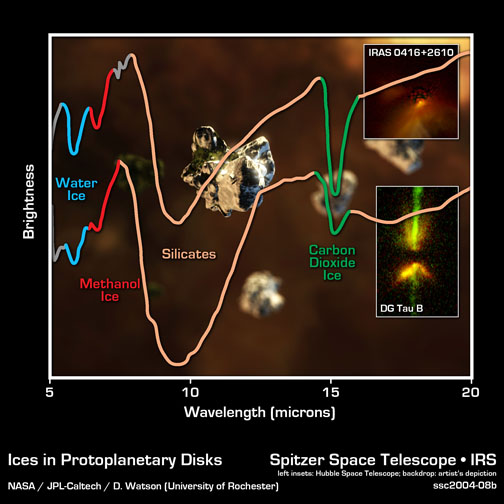
|
The first step in planetary accretion is for solid grains to form and begin to stick together. The Spitzer Space Telescope looked at several planetary disks to see how light was absorbed or reflected by the disks as a function of wavelength. Certain materials absorb light at particular wavelengths and thus create distinctive patterns of absorption as a function of wavelength. The Spitzer disk data (above) indicate the presence of the ices of water, methanol, and carbon dioxide and of silicate mineral grains (most likely the green mineral olivine). The white and greenish object above the 'silicates' label is an artist's impression of what an ice-coated grain of olivine in these disks might look like. Hubble photos of two of the disks analyzed appear on the right. These data not only support the view that accretion is taking place within these disks, but also indicate that some of the basic compounds needed for life are present. Will planets someday form around these stars, and will life someday evolve on one or more of these planets? Next Image: Views from aboveImage credit: Spitzer Space Telescope; The source for this image and explanations is the Spitzer Space Telescope web site. |
|
|
|
